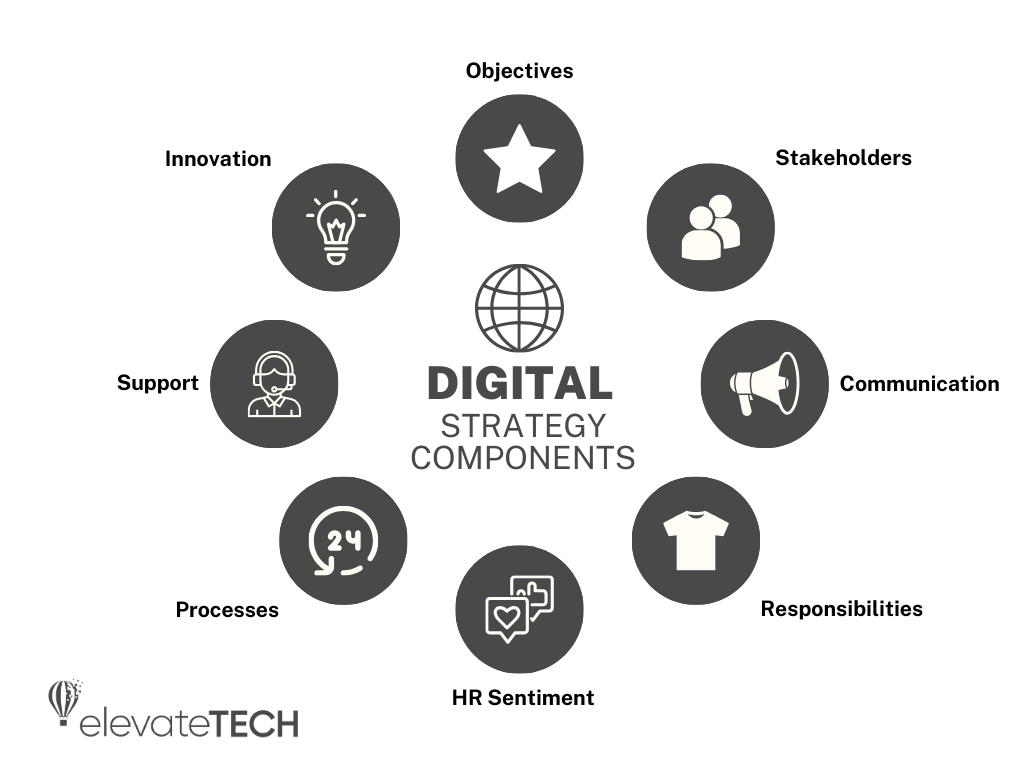In this day and age, the integration of business and technology is crucial for sustainable growth and success. The gap between the two domains offers a number of challenges that need to be addressed to have seamless operations and business continuity. Challenges emanate from processes, people and their adaptation and change.
Five Common Challenges of Bridging the Gap.
Unclear Targets and Divergent Objectives.
When the focus is on quick wins and short-termism is the order of the day, implementing technology initiatives, which normally focus on long-term efficiency and innovation, might be challenging. Aligning the objectives from both the business and technology camps is key.
Lack of Communication.
Communication distortion or lack of communication flowing through well defined channels between stakeholders conversely affect the alignment of business and technology. Technically-savvy jargon can be daunting for business stakeholders and business terminology might be too abstract for technology teams. Effective communication can be achieved through formality and the involvement of an ‘inbetweener’ that can ‘understand and speak both languages’.
Fast Technological Advancements.
At times, technology evolves more rapidly than business and business model’s ability to adapt and advance. Striking the right balance between technology while operating business seamlessly and smoothly is tricky. Following a thorough gap analysis, the requirements to bridge the gap between the AS-IS and TO-BE, need to be staggered and fragmented to a point where managing the syncing between business and technology is frictionless.
Resistance to Change.
The human resources element in synchronising business and technology is crucial. Employees may grow complacent or fear the unknown and offer resistance to change (such as the introduction of automated workflows or the roll-out of an organisation-wide ERP solution). Concerns about job security or lack of familiarity often result in hindrances. Clear communication, reassurance and the required training all help in overcoming this resistance.
No clear digital strategy.
With no digital strategy in place, organisations commonly implement technologies haphazardly leading to disjointed systems and underutilised resources. Key personnel need to be responsible for the cohesion of the different units forming the business. The digital strategy needs to be well-defined with a comprehensive plan guiding the technology introduction or integration process. Involving a technology agnostic consultancy firm, often helps in truly understanding the gaps, coming up with the strategy and helping find the right solution that is a best fit for the requirements.
How to overcome these Challenges.
The starting point is developing a custom digital strategy that aligns with the overarching business goals of the organisation, irrespective of the size and sector it operates in. It is best practice to conduct thorough assessment of the current technological landscape and business objectives to create a roadmap for frictionless integration. As addons one could also analyse the competitive landscape and the external environment for a holistic picture. This ensures that the technology initiative/s is driven and contributes to the top-line business strategy.
A model to adhere to is the PPT framework – People, Processes, Technology. The success of any technology-business integration heavily relies on the underlying processes and the people who will be managing and ultimately using the technology. Business process refinements and re-engineering and training sessions and workshops ease the integration of new technologies. Clear information about the benefits of the new tech systems facilitate the transition and help foster a culture of adaptability, neutralising resistance.
Change brings about redesigning of processes, tweaks to organisational structures and possibly the shifting of responsibilities to accommodate technologies. Change management is crucial to first and foremost streamline operations and subsequently leverage technology for maximum efficiency.
Understanding the challenges and opportunities at all times is important to harness the power of technology.
“Technology’s role is to be an enabler of business objectives rather than an end in itself” – Clayton J Zammit, ElevateTECH.
Technology is there to support business and strategic goals and eventually add value to your bottom line, fostering sustained growth and innovation.


